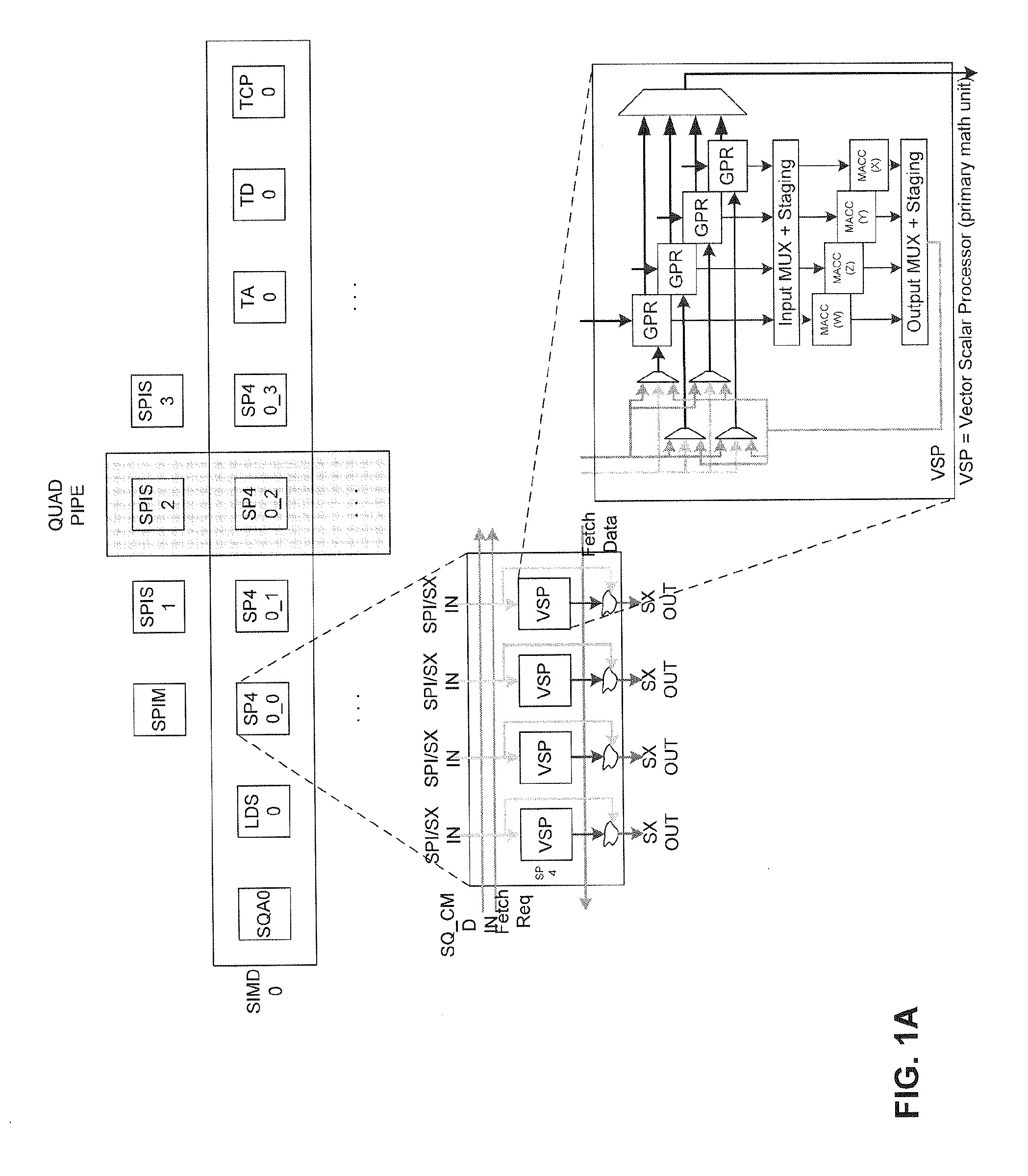Method and System for Load Optimization for Power
a load optimization and power technology, applied in the direction of digital computers, processor architecture/configuration, instruments, etc., can solve the problems of inefficiency, excessive power-inefficiency, waste of power, etc., and achieve the effect of reducing power consumption and maximizing system performan
- Summary
- Abstract
- Description
- Claims
- Application Information
AI Technical Summary
Benefits of technology
Problems solved by technology
Method used
Image
Examples
Embodiment Construction
[0011]The present invention meets or addresses in part the above-described needs. For example, in one embodiment of the present invention, workload within the shader engine is distributed in a manner that maximizes system performance and reduces power consumption.
[0012]More specifically, embodiments of the present invention provide a load balancing per watt technique (LBPW). In one implementation, this LBPW technique monitors the number of arithmetic logic unit (ALU) instructions and fetch instructions executed within each SIMD. Additionally, newly assigned thread loads (i.e. wavefronts) are queued and are monitored. This monitoring is used to assess current and future utilization of the SIMDs. Under this scheme, only SIMDs that are actually needed or predicted to process a given workload within the shader engine, remain activated. SIMDs that are not needed are deactivated. By deactivating unneeded SIMDs, power consumption is reduced. As an additional benefit, the embodiments of the...
PUM
 Login to View More
Login to View More Abstract
Description
Claims
Application Information
 Login to View More
Login to View More - R&D
- Intellectual Property
- Life Sciences
- Materials
- Tech Scout
- Unparalleled Data Quality
- Higher Quality Content
- 60% Fewer Hallucinations
Browse by: Latest US Patents, China's latest patents, Technical Efficacy Thesaurus, Application Domain, Technology Topic, Popular Technical Reports.
© 2025 PatSnap. All rights reserved.Legal|Privacy policy|Modern Slavery Act Transparency Statement|Sitemap|About US| Contact US: help@patsnap.com



